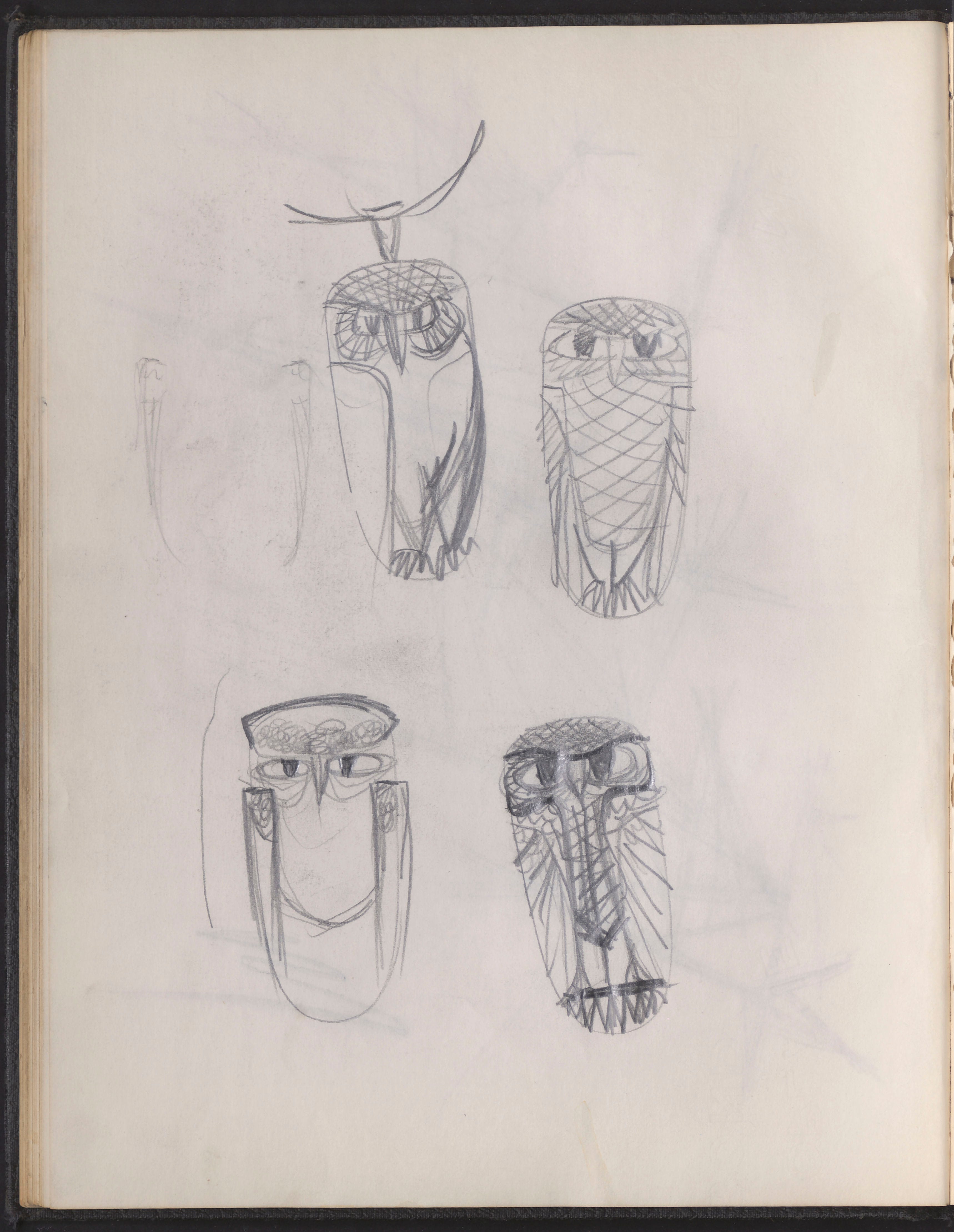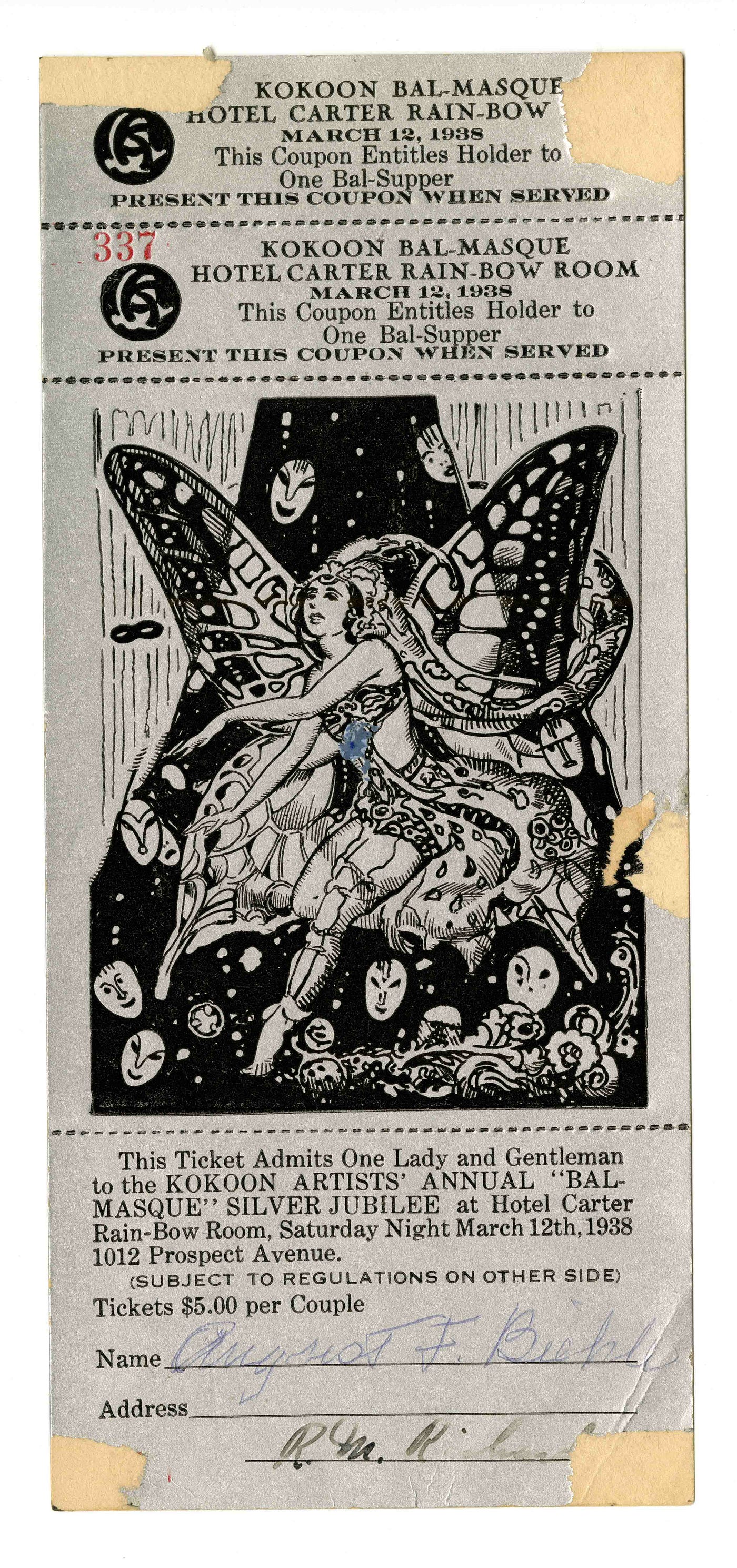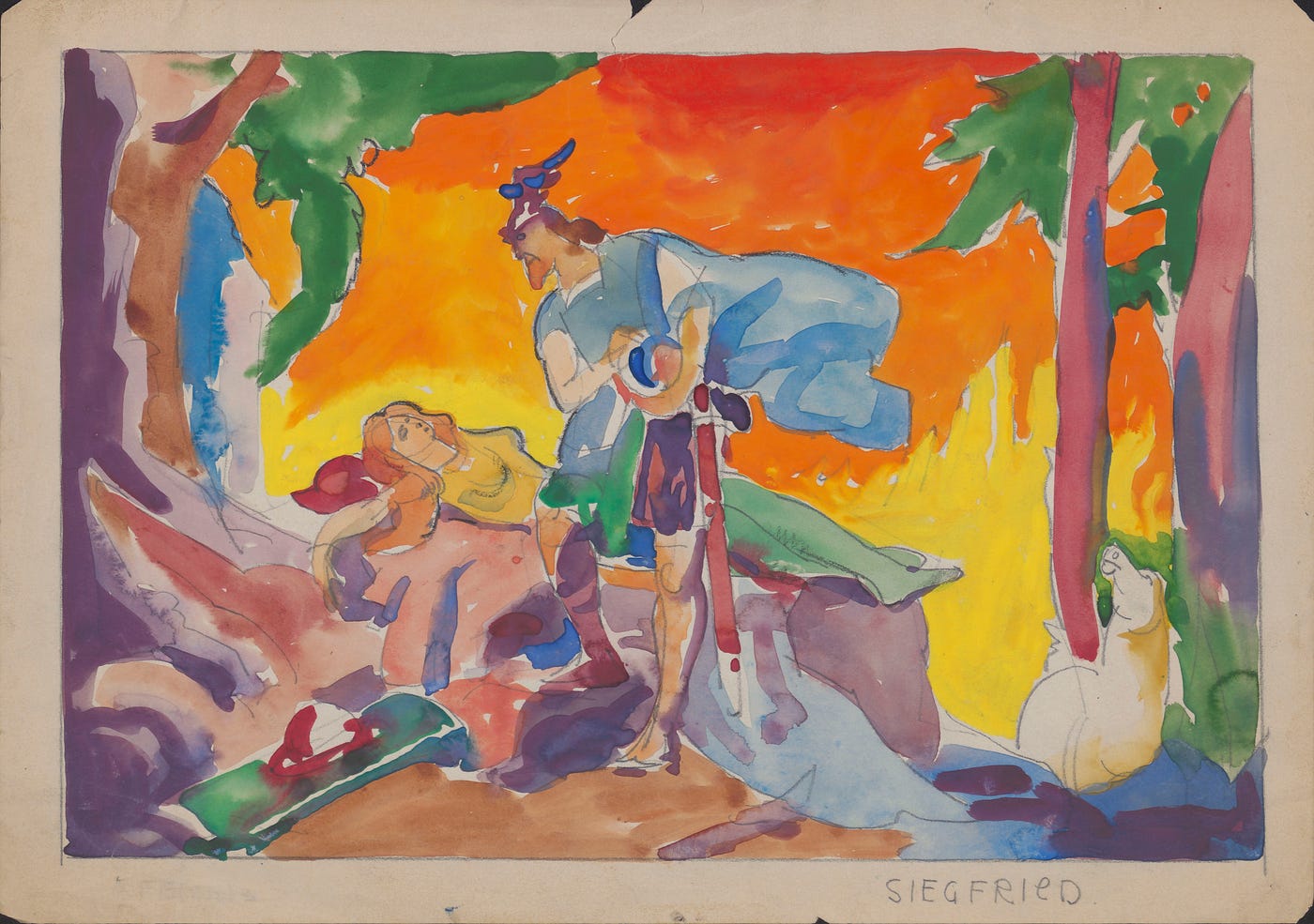Artists’ Collections in the Archives: Digitizing Cleveland’s Artistic History | by Cleveland Museum of Art | CMA Thinker | Sep, 2022
6 min read
By Sara Kunkemueller, Digitization Intern, Ingalls Library and Museum Archives
This summer time, I joined the Ingalls Library and Museum Archives as a digitization intern. My do the job associated quite a few projects, from updating metadata to scanning textbooks for the Net Archive, but considerably of my time was devoted to digitizing artists’ collections in the archives. The initial resources I scanned ended up John Paul Miller’s sketchbooks.
Miller (1918–2013) was a renowned Cleveland jeweler. Possessing graduated from the Cleveland Institute of Art (CIA), he returned right after Army provider in Earth War II to be a part of the school’s employees as a professor. At the identical time, he commenced developing items for regional jewellery retail store Potter & Mellen. While Miller was qualified in industrial style and invested his vocation targeted on jewellery, he also harbored a deep enjoy for watercolor and developed each images of his travels and a range of video products. In the course of his tenure at the CIA, long lasting more than 40 several years, he taught all these subjects. Miller’s function has been acquired by several personal collectors as perfectly as by the Cleveland Museum of Artwork (CMA) and the Renwick Gallery, amid other individuals.
Miller is regarded for his use of granulation, a method finest regarded from archaeological jewellery. By way of the granulation system, small beads of steel are affixed to a much larger type without soldering. Miller employed granulation to make really sophisticated area textures and styles. Concentrating on both equally geometric abstractions and reasonable animal and insect types, Miller’s use of granulation lends his overall body of function an overall stylistic coherence, weaving a modernist aesthetic into normal surfaces. His sketchbooks are filled with repetitive drawings, exactly where Miller performs with the type of the granulation sample. Mainly because Miller’s sketches are relatively near in size to his ultimate items, there are quite a few items in the CMA’s assortment, in the archives’ May perhaps Exhibit documents, and in other art galleries that can be matched practically exactly to these web pages.



Miller’s sketchbooks augment his entire body of work with in-depth notes on building, which include experimental notes produced in the workshop. Numerous are filled with metallic dust, and even small scraps of discarded gold, suggesting that they lived on his workbench and that models ended up matter to revision for the duration of production. In a single occasion, Miller wrote out instructions for a limited movie pursuing the creation of a single of his pieces, leaving driving a meticulous record of his method. Together with prices and other information and facts, the within handles often have a record of names or titles indicating which is effective of his were commissioned, produced for a individual clearly show, or developed in collection. In just sketchbook 19, there is also a lengthy handwritten insurance coverage appraisal detailing the trivia of a piece’s development, from materials to strategies. All of this is appropriate to potential collectors and conservators of Miller’s do the job, but it also preserves his extensive know-how of metalworking and could probably provide as a educating support. Miller’s sketchbooks incorporate a prosperity of information about his parts, his instructing tactics, and his particular and professional passions.
All 32 of Miller’s sketchbooks are at present available on the CMA Archives’ digital collections. Also out there to see are comprehensive renderings of his rings and pendants, pictures from his journeys to California and Antarctica, and pictures of his will work from the May possibly Demonstrate collection.
The remainder of my internship concentrated on the archives’ August F. Biehle Assortment, composed mostly of sketch products relating to many media and projects in the course of Biehle’s prolific occupation. A son of German immigrant and ornamental artist August Biehle Sr. (also represented in the electronic archives), Biehle (1885–1979) was a Clevelander who contributed immensely to the city’s booming artistic character in the early 20th century. After completing his art education in Germany, Biehle returned to Cleveland just as it was reaching its peak of inventive innovation and started doing the job at the Otis Lithograph Organization. About the study course of his career, he produced amazing ads, murals, and paintings and turned a person of the most well known Cleveland school artists.
Biehle was also a member of the city’s preeminent eclectic art firm, the Kokoon Arts Club. He brought with him both equally inventive talent and inspiration, obtaining seen an influential exhibition of Der Blaue Reiter (The Blue Rider), a German Expressionist group, in Munich in 1912. This knowledgeable Biehle’s possess modernist is effective and, in change, proved to be a stylistic impact for other club customers. The archives’ assortment has a amount of Kokoon Club objects, which includes posters for club occasions, publication supplies, and ticket designs for the club’s famous and lascivious balls. The Kokoon Club allowed Biehle to experiment with his formal creative education, and the conversation concerning the club’s flourishing modernists inspired him to delve into a wide variety of types, which includes the producing Art Deco and Cubism actions.

Of specific note in the Biehle selection are sketch resources relating to murals he manufactured for various notorious properties across the city, including the Kokoon Club, the Hofbräuhaus, and Herman Pirchner’s Alpine Village Theatre Cafe. These mural sketches, generally rendered loosely in gouache on paper or board, are hanging not only because of their splendor but also mainly because pretty few visual records of the murals keep on being. The Kokoon club, for example, showcased a number of Biehle will work on its partitions throughout its heyday. Nonetheless, following the club’s decrease and disbandment in 1956, Biehle’s murals were being demolished with the building. This is also legitimate of his considerable function in Pirchner’s Alpine Village, notably Biehle’s depictions of fantastical scenes and common times from opera and theater. His affect prolonged to the Eldorado Club previously mentioned the restaurant, where Pirchner hosted well-known visitors. In 1996, on the other hand, that framework was razed as well. Even though there are some photographic records containing Biehle’s demolished mural will work, they are often focused on society gatherings and the people today who frequented the spaces fairly than on the artwork alone. The sketch renderings of Biehle’s murals are some of the finest remaining documentation of his presence throughout influential buildings in the metropolis.

Over and above Cleveland, Biehle represents a terrific encapsulation of the explosion of inventive innovation in the early 20th century. Stylistically adventurous, Biehle’s passions shifted above the class of his job. He was a proficient ornamental artist, acquiring apprenticed beneath his father, and his lithographs had been in direct discussion with other critical advertisers of his age. Biehle’s business operates contain great studies of his peers’ creations, this kind of as quite a few layouts for the Arrow Collar adverts that created American artist Joseph Christian Leyendecker (1874–1951) famed, as perfectly as various observational experiments that present the depth of his official instruction. Biehle’s prints had been at the forefront of the shift from Art Nouveau to Art Deco. In the later sections of Biehle’s occupation, his paintings took on a placing Cubist model and were imbued with the dynamism of Futurism. His numerous abilities make him an outstanding instance of the energy of Cleveland’s artistic scene at its height.
Biehle’s other get the job done involves a wide variety of vibrant painted landscapes influenced by Cubism. The CMA retains in its collection one these portray as properly as operates on paper by the artist. To see the Biehle assortment on the web, remember to take a look at https://digitalarchives.clevelandart.org/digital/assortment/p17142coll15.







